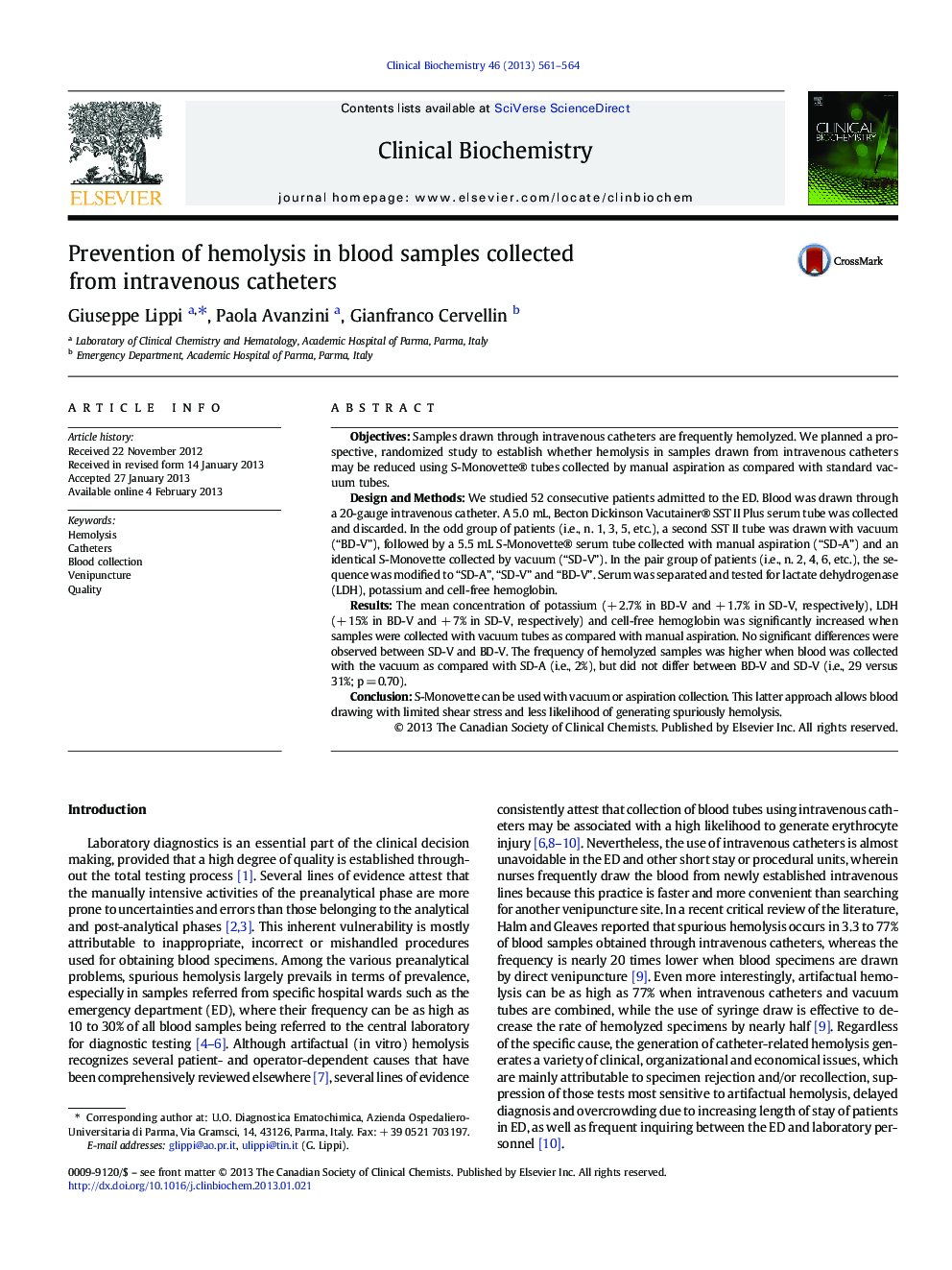| Article ID | Journal | Published Year | Pages | File Type |
|---|---|---|---|---|
| 1969634 | Clinical Biochemistry | 2013 | 4 Pages |
ObjectivesSamples drawn through intravenous catheters are frequently hemolyzed. We planned a prospective, randomized study to establish whether hemolysis in samples drawn from intravenous catheters may be reduced using S-Monovette® tubes collected by manual aspiration as compared with standard vacuum tubes.Design and MethodsWe studied 52 consecutive patients admitted to the ED. Blood was drawn through a 20-gauge intravenous catheter. A 5.0 mL, Becton Dickinson Vacutainer® SST II Plus serum tube was collected and discarded. In the odd group of patients (i.e., n. 1, 3, 5, etc.), a second SST II tube was drawn with vacuum (“BD-V”), followed by a 5.5 mL S-Monovette® serum tube collected with manual aspiration (“SD-A”) and an identical S-Monovette collected by vacuum (“SD-V”). In the pair group of patients (i.e., n. 2, 4, 6, etc.), the sequence was modified to “SD-A”, “SD-V” and “BD-V”. Serum was separated and tested for lactate dehydrogenase (LDH), potassium and cell-free hemoglobin.ResultsThe mean concentration of potassium (+ 2.7% in BD-V and + 1.7% in SD-V, respectively), LDH (+ 15% in BD-V and + 7% in SD-V, respectively) and cell-free hemoglobin was significantly increased when samples were collected with vacuum tubes as compared with manual aspiration. No significant differences were observed between SD-V and BD-V. The frequency of hemolyzed samples was higher when blood was collected with the vacuum as compared with SD-A (i.e., 2%), but did not differ between BD-V and SD-V (i.e., 29 versus 31%; p = 0.70).ConclusionS-Monovette can be used with vacuum or aspiration collection. This latter approach allows blood drawing with limited shear stress and less likelihood of generating spuriously hemolysis.
► Samples drawn through intravenous catheters are frequently hemolyzed. ► Hemolysis was higher in vacuum tubes than in S-Monovette collected in manual mode. ► S-Monovette can be used with vacuum or aspiration collection ► This approach allows limited shear stress and less likelihood of spurious hemolysis
